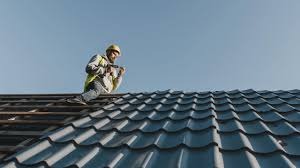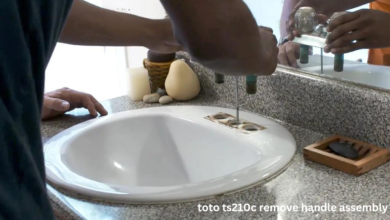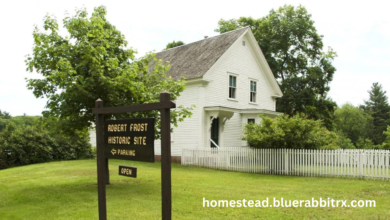The Role of a Roofing Contractor in Preventing Roof Leaks

Roof leaks can lead to various problems, from water damage inside your home to structural issues that can be costly to repair. Preventing roof leaks starts with proper maintenance, timely repairs, and proactive inspections. A roofing contractor is essential in ensuring that your roof remains in top condition, safeguarding your home from potential leaks. By addressing minor issues before they escalate and conducting regular inspections, contractors help keep your roof durable and leak-free. We will discuss how roofing contractors from Roofing Systems of Hampton Roads contribute to preventing leaks and maintaining the overall health of your roof.
Ways of Ensuring a Leak-Free Roof
1.Regular Roof Inspections to Identify Potential Problems
One of a roofing contractor’s primary responsibilities is conducting regular roof inspections. These inspections are critical in identifying potential problems that may eventually lead to leaks. During an inspection, contractors check for common issues like missing or damaged shingles, cracked flashing, and improper roof sealing. They also look for signs of wear and tear that may not be immediately visible to homeowners.
By spotting these issues early, roofing contractors can address them before they cause significant damage. Preventing leaks starts with detecting small vulnerabilities; regular inspections are the first step in this process. Homeowners may overlook signs of trouble, but trained contractors know what to look for and can recommend appropriate solutions to prevent water from entering the home.
2.Timely Repairs and Maintenance
Another key function of a roofing contractor is addressing minor roof issues through timely repairs. Small problems such as loose or missing shingles, cracks in the roof, or damaged flashing can quickly worsen if left unattended. These seemingly minor defects can create entry points for water, leading to leaks and more extensive damage over time.
A roofing contractor ensures that necessary repairs are made promptly, reducing the risk of leaks. Whether replacing damaged shingles, repairing flashing, or resealing vulnerable areas, timely maintenance helps extend the life of your roof and protects it from water intrusion. Contractors use high-quality materials and proper installation techniques to fix any damage, preventing further deterioration that could result in leaks.
3.Proper Installation of Roofing Materials
The installation of roofing materials is a critical factor in preventing leaks. Improper installation can leave your roof vulnerable to water damage, as gaps or weak points in the roofing system can allow moisture to seep in. Roofing contractors have the knowledge and experience to ensure that materials such as shingles, underlayment, and flashing are installed correctly, creating a solid barrier against water.
When installing a new roof or making major repairs, a contractor ensures that all roof system components are properly aligned and sealed. This includes ensuring proper drainage so water flows away from the roof rather than pooling in vulnerable areas. Proper installation also ensures that roofing materials are durable and resistant to the elements, reducing the likelihood of leaks.
4.Addressing Flashing and Sealant Issues
Flashing and sealants prevent water from penetrating the roof at vulnerable points, such as around chimneys, skylights, vents, and valleys. Over time, flashing can become damaged or loose, while sealants may crack or wear away due to exposure to the elements. If not addressed, these issues can lead to water infiltration and roof leaks.
Roofing contractors are skilled in inspecting and repairing flashing and sealant issues. By replacing damaged flashing or resealing weak points, contractors help maintain the integrity of your roof and prevent water from entering the home. Regular inspection and maintenance of these critical areas are essential for preventing leaks, especially in locations where water is more likely to pool.
5.Ensuring Proper Roof Ventilation
Proper roof ventilation is another important factor in preventing leaks. Without adequate ventilation, moisture can accumulate in the attic, leading to condensation and the potential for water damage. Poor ventilation can also cause shingles to deteriorate more quickly, increasing the risk of leaks.
A roofing contractor ensures that your roof has sufficient ventilation to allow airflow and prevent moisture buildup. This may involve installing additional vents or adjusting the current ventilation system. By maintaining proper ventilation, contractors help reduce the likelihood of condensation-related leaks and extend the life of the roofing materials.
6. Proactive Measures to Protect Against Weather Damage
Weather conditions like heavy rain, snow, and strong winds can damage your roof over time. Roofing contractors take proactive measures to protect your roof against weather-related damage that could lead to leaks. This may involve reinforcing areas prone to wind damage, ensuring proper drainage to prevent water buildup, and installing ice and water shields to guard against ice dams in colder climates.
By preparing your roof for extreme weather conditions, contractors help reduce the risk of leaks caused by environmental factors. They also inspect your roof after major weather events to identify and repair any damage before it leads to more serious issues.
The Importance of a Roofing Contractor in Leak Prevention
Roofing contractors play a vital role in preventing leaks by conducting regular inspections, making timely repairs, and ensuring proper installation and maintenance of roofing materials. Their proactive approach helps identify potential issues before they escalate, protecting your home from water damage and costly repairs. By addressing flashing, sealants, and ventilation needs, contractors ensure that your roof remains durable and leak-free for years. Taking these preventive steps with the help of a roofing contractor can save homeowners time, money, and stress while maintaining the integrity of their home’s roof.





